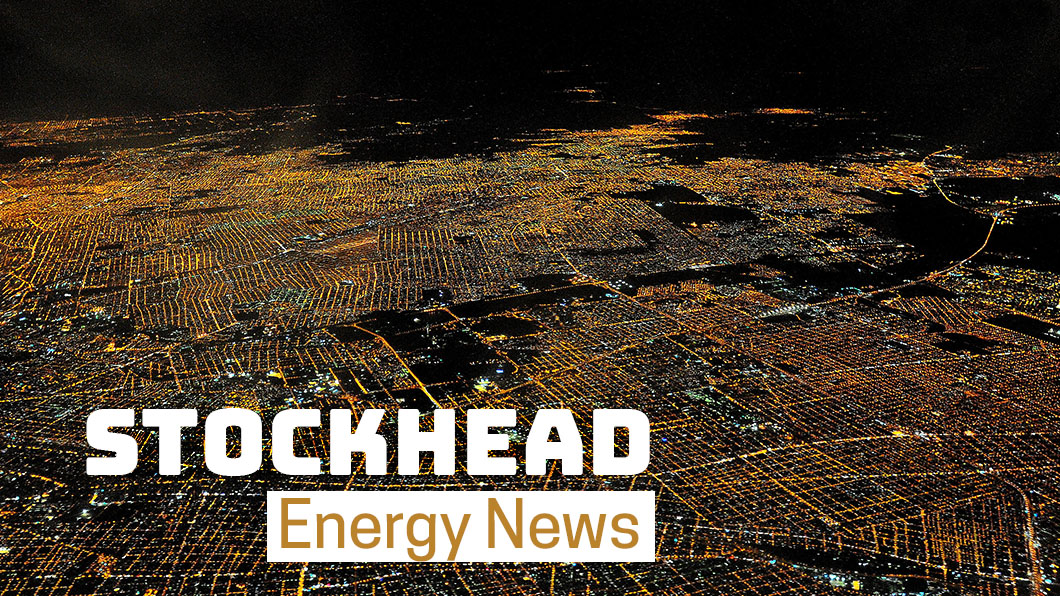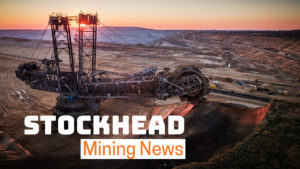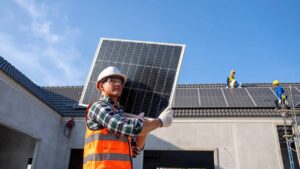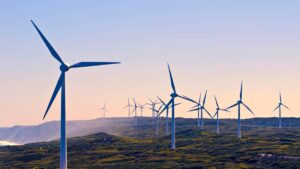Green Energy: How long before the Australian electricity grid can handle 100% renewables?

Pic: Matthias Kulka / The Image Bank via Getty Images
Can the grid handle 100% renewables by 2025?
New AEMO boss Dan Westerman has used a major speech this week to say the market operator is preparing the national grid to handle a 100% renewable penetration by 2025.
That is just four years away, but there is some inspiration already from South Australia, which has an average renewables penetration of almost 60% but has operated at 100% renewables or close to it in brief stints, doing so for the first time in October last year.
“Across the whole East Coast National Electricity Market, there are already points in time when renewable energy contributes to more than half of all electricity supply,” Westerman told a CEDA event in Melbourne on Wednesday.
“That puts us at the front of the pack for renewables penetration for any large grid in the world. But the pace of change in Australia continues to accelerate.
“So, the goal that I’m setting for us, Australia’s independent system operator, is to harness the talents, capabilities, experience and know-how across the industry, to engineer grids that are capable of running at 100% instantaneous penetration of renewable energy, and do this by 2025!
“So, that’s a grid able to manage 100 per cent renewables penetration – at any moment in any day – by 2025.
“That’s not decades away. It’s just a few years’ time.”
The comments did not go unnoticed by members of the Morrison Government, who have continued to advocate the building of new non-renewable power sources against the complaints of the green energy sector.
Resources Minister Keith Pitt reportedly called the idea the grid could be powered entirely by renewables “complete nonsense” in an interview on ABC radio, saying “it needs to be backed up … by gas and other means.”
Not quite what Westerman meant if you read his speech in its entirety.
Westerman made the comment that gas is “invaluable” and “will continue to play an important role in our integrated network”.
“The prospect that the recently announced gas-fired power station at Kurri Kurri, might only be needed for 2 per cent of the time, seemed to draw quite a lot of attention,” he said.
“But the conclusion to make is not that firming plants like these aren’t required.
“The point is even at 2 per cent of the time, dispatchable generation like this unlocks many multiples of low-cost renewable generation capacity into the market, by providing the security for when the sun isn’t shining, the wind isn’t blowing, and other storage can’t bridge the gap.”
Westerman noted there were engineering and market challenges to overcome to allow the grid to safely handle 100% renewables generation at a time in the coming years.
“With our existing tool kit, it’s getting harder for us to manage the stability of the power system as the penetration of solar and wind, even at today’s levels, pushes the system to its limits,” he said.
“To give you an idea, in 2016, our control room staff issued just six manual interventions to maintain a secure grid.
“Last year, we made 321 manual interventions … pretty much one every day, and it’s been the same so far this year.”
Evolution wants grid power to meet net zero target at Cowal
Evolution Mining (ASX: EVN) is the latest gold miner to set up a net zero target.
The Jake Klein led gold miner wants to reduce greenhouse gas emissions by 30% by 2030 and achieve net zero by 2050 or earlier.
Its biggest headache is the big Cowal mine 350km west of Sydney, which is responsible for something like 50% of its emissions.
That operation has years left to run, with Evolution today announcing its board has approved an underground development which will produce 1.7Moz of gold over a life of 17 years.
Klein told analysts on a conference call today that Evolution was putting its faith in connecting to clean grid power as renewables penetration in the NEM increases to reduce scope 1 and 2 emissions.
“If we were to buy carbon offsets for all of our emissions it would cost us about $9 million, and that’s a situation we don’t want to be in where we’re buying carbon offsets,” he said.
“We believe that Cowal, which contributes 50% of our emissions, is the place we should be most focused on and the pathway to achieving the 30% reduction by 2030 is to get to grid power which is renewable.
“So we need to get in the queue early and we’ve started to progress that so that’s a renewable power source from the grid.”
Evolution Mining share price today:
Related Topics
UNLOCK INSIGHTS
Discover the untold stories of emerging ASX stocks.
Daily news and expert analysis, it's free to subscribe.
By proceeding, you confirm you understand that we handle personal information in accordance with our Privacy Policy.








